
This essay is envisaged as an attempt to look closely at the use of repetition, difference, and temporality in Zofia Kulik’s works from a feminist perspective. In particular I will look at her work All the Missiles Are One Missile, a huge photomontage that has been exhibited widely, along with several other related works.[1] When composing the work, the artist used multiple images including TV stills. In other works in which Kulik critically addressed various “militant” imagery of warfare and the casualties of ethnic conflicts she mostly referred to those that dominated TV screens in the 1990s, but more recently the artist has returned to those works as a kind of metaphoric reference to more recent conflicts and casualties of war.
In her photo-collage-like works Kulik mostly experiments with compositions made through the repeated imprinting of one or more negatives on carefully masked photographic paper, which, in a way, turns technological means into a metaphorical device for pointing out the potentials and dangers of the return of the different, not the return of the same, in Deleuzian terms.[2] The Deleuzian concept of time is cracked, and open to the potentialities generated by a return of difference: “It is not the same which returns, it is not the similar which returns; rather, the Same is the returning of that which returns,—in other words, of the Different; the similar is the returning of that which returns,—in other words, of the Dissimilar.”[3] Deleuze’s warning is about the danger of an oversimplified interpretation of eternal recurrence, insofar as it designates a certain metaphysical understanding of the return as more-than-historical.[4]
I wish to argue that Kulik’s works contemplate both the intrinsic structure of the imageries that have been accumulated, circulated, and proliferated via the media, and also the effects that the perpetuation and spectacularization of images of war have on reciprocal relations between femininity and masculinity, both in the East and West.
Nevertheless, the perspective from which this essay developed has been heavily swayed by the current, widespread, and strengthened patriarchal and sexist oppression of women in Eastern Europe that has been imposed by the state, church, family, and other institutions.
It seems that artists are looking for effigies and metaphors, which link the iconography of a soldier with the context of military past and current wars as well as the contemporary discussion about masculinity and its metamorphoses. This intensified gender awareness, though nowadays articulated openly, from a visual perspective is nothing new in Polish art.[5]
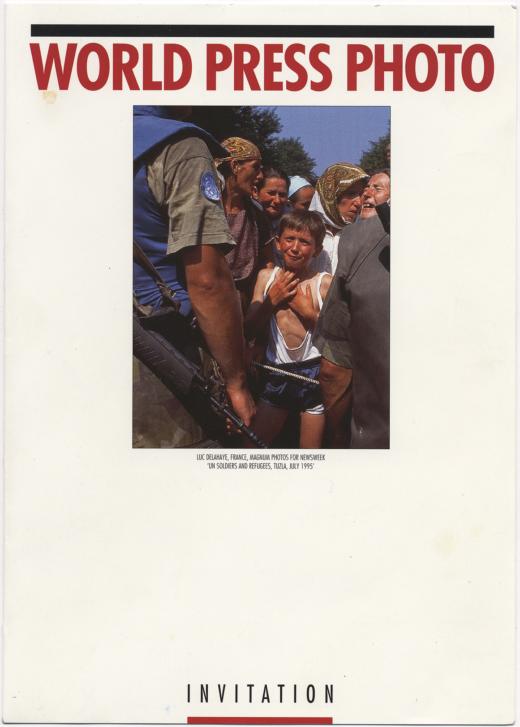
Invitation To The World Press Photo Exhibition Held At Zachęta National Gallery Of Art, Warsaw, 1996; Luc Delahaye’s Soldiers And Refugees Pictured
While socialist ideals at least aimed towards gender and social equality, and claimed programmatic improvement of production relations in the future, nowadays it feels as if even the “map” of ideals has changed, and as if the clock has been turned back to premodern times when patriarchy used to be the norm, not the target to fight.
The racism and conflicts from the 1990s originally motivated Kulik’s work ETHNIC WARS. LARGE VANITAS STILL LIFE[6] via Luc Delahaye’s photo “UN Soldiers and Refugees, Tuzla, July 1995” (Magnum Photos for Newsweek), which was shown at the World Press Photo exhibition in 1995 [FIG.1]. Since then the reporter’s “spectacularized” images of atrocities, horror, and sorrow have been replaced by images from new battlefields, conflicts, camps, and racial outbursts. However, Kulik’s ethnographic and anthropological collection of juxtaposed skulls[7] over shawls with different patterns foresee, in a way, the newly raised racism across Europe, the frequent anti-Semitic or anti-Roma slurs, and the Islamophobic attacks that undeniably link the current humanitarian refugee crisis with historical Islamophobia in Europe.[8] Whilst the reality captured by the reporter’s lenses could not address the prospect of recurring and future conflicts that are ever more frightening – because the missiles became more advanced, and thus ever more lethal- Kulik’s frieze-like installations of scarves and skulls point to the never-ending archives of memento mori that grow in piles on humanity’s graveyards worldwide as I am writing this text.
About Repetition, Difference, and the Terror of the Eternal Return
Gilles Deleuze’s unorthodox emphasis on eternal recurrence as contaminated by inevitable difference leads to an entirely different understanding of temporality. It is productive, and history is ultimately unrepresentable in consciousness or language. In Difference and Repetition Deleuze addressed in detail the Nietzschean problematic of the “eternal return of the same.”[9] According to his pivotal earlier book Nietzsche and Philosophy (1962), he had already announced that it is not the empirically same, but difference, multiplicity, and becoming that return. What remains eternal and “the same” is the movement of recurring itself: “It is not the ‘same’ or the ‘one’ which comes back in the eternal return but return is itself the one which ought to belong to diversity and to that which differs.”[10]
For Deleuze, eternal return implies that difference and becoming, as basic ontological principles, split the very heart of being from the beginning. Thus diversity and multiplicity must fundamentally occur, which is to recur.[11] Moreover, Deleuze argued that there are two aspects of the eternal return in Nietzsche. The first is its cosmological aspect, under which Nietzsche attacks the thermodynamic notion of entropy prevalent during his day. This may be closely related to and reflected by the universal and all-encompassing aspects of All the Missiles Are One Missile. The second aspect is the ethical one, through which one selects the past that has to return to one’s present as if this present were perpetually repeated (e.g. the concrete and recognizable images from different historical events included from journalistic reports in the same work).[12] One may also recognize both aspects in Kulik’s mandalas, in her mirroring reflections, and the other symbolic representations of the selective eternal return.[13]
In order to understand the recent organized amnesia in Central, Eastern, and Southeastern Europe, and the rise of conservative, nationalist, patriarchal, and racist sentiments and policies in the politically and economically emergent European states at this point in history, it is necessary to emphasize the danger of misunderstanding what it is that returns and what exactly repetition does to memory. Kulik’s works serve as a guide towards such a critical reflection of both the past and present.
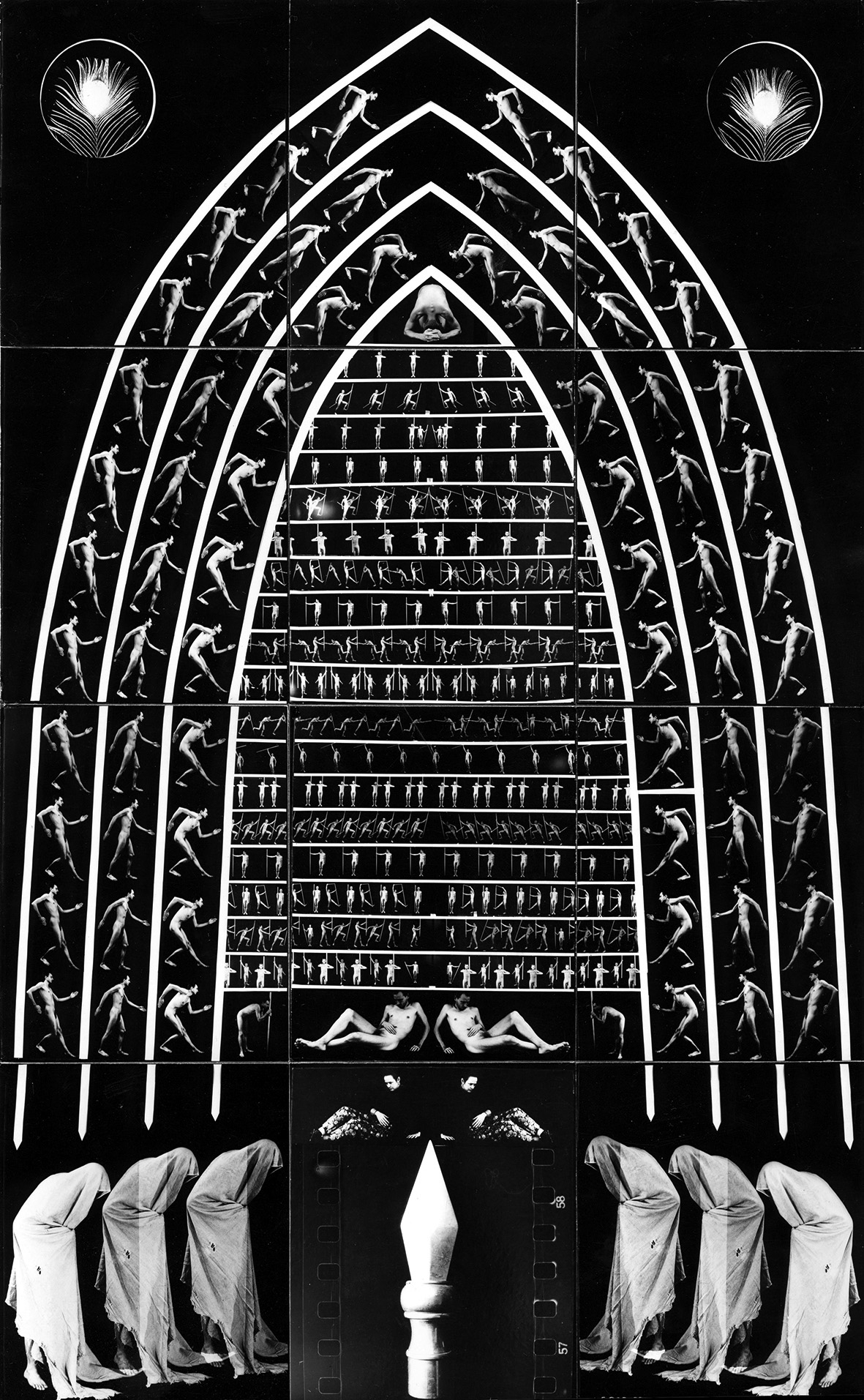
Zofia Kulik, ‘March, March, March’ (ĺMarsz, Marsz, Marsz’), 1990, 18 gelatin silver prints, 240×150 cm
Starting from the current sociopolitical context in Poland and other post-socialist countries, this essay aims to examine the potentiality to interpret the structure and visual language of several seminal works created by Kulik in the 1990s as a feminist critique of repetitive militant and phallocentric power. This is not solely imposed by the vocabulary used in their titles, which refer to phenomena and rituals from the socialist past: e.g. MARCH, MARCH, MARCH (1990), and The Guardians of the Spire (1990) (an obvious reference to the Palace of Culture and Science in Warsaw—Stalin’s gift to Poland—which is adorned by a spire), but also represented through the link between the words’ meanings and the rigid visual order and symmetric, mirrorlike compositions.
The designs typical for (or merely resembling) various artistic and architectural media, genres, objects, and patterns from the treasury of national or international cultural heritage (e.g. triptychs, altars, mosaics, tapestries, carpets, patterned headscarves, mandalas, or Gothic windows) have not been applied by accident: they form both the systemic bases and superstructure that frame the subject, or more precisely to which the subject is conformed and subordinated—even crucified (or, in Kulik’s words “hammered”: “I have been hammered, we all have been hammered”).[14]
In these works, accumulation, mirroring symmetry, repetition with difference, and processual iconography accentuate the images that serve the metaphoric pointing towards dismantling of the recurrent, stereotypical national and political myths. And not only by revealing patriarchal myths about femininity, but also by deconstructing the stereotypical myths of masculinity.[15] Because of the ways in which Kulik presented male protagonists, the “guardians of the spire” represent “a system of cultural signification defined as a repertory of specific signs and poses,” which has often been interpreted in psychoanalytical terms:
Not only are its motifs conspicuously phallic (not by chance is Warsaw’s spired Palace of Culture the artist’s favorite architectural motif) but its formal structure insistently aligns the idea of composition with the symbolic order defined as the invisible but omnipresent Law governed by the phallic signifier.[16]
I wish to argue that Kulik’s works can be interpreted as a certain warning, or even an anticipation, of the evident recent recurrence or strengthening of patriarchy, the organized amnesia around fascist atrocities from the past, and the growing racism in contemporary Poland that was recently underlined by the new anti-defamation bill. Not only can her works created in the 1990s-the period of transition, and before May 1, 2004, when Poland was officially accessioned to the EU-be interpreted as a kind of “artistic revenge” (in Kulik’s own words), a type of poignant critique of the biopolitical control of socialist regimes over the body and subjectivity, but they can also serve as anticipatory visualized announcements of the currently prevailing, hegemonic neoliberal powers and their rampant violation of human rights, gender and sexual equality, along with accumulation and dispossession, in David Harvey’s terms.[17]

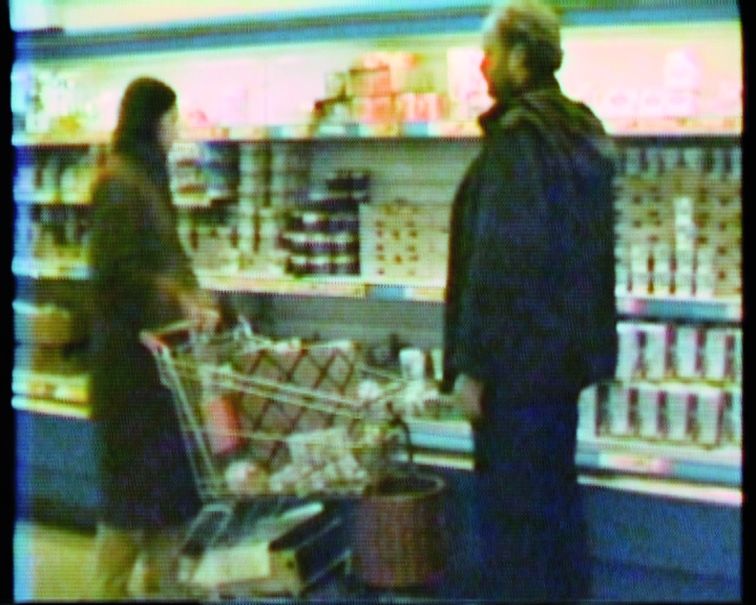
For example, the controversy surrounding an amendment to the IPN Act (the Act on the Institute of National Remembrance signed by Polish President Andrzej Duda on February 6, 2018) is just one of a recent unprecedented series of controversial political initiatives that prove the attempts of the current Polish state to control and overwrite historical narratives. The proposed revision of the IPN Act would have imposed a fine or imprisonment of up to three years for anyone who publicly or “against the facts” stated that the Polish nation or state are responsible (or co-responsible) for crimes committed by Nazi Germany or other crimes against humanity.[18] However, after intense public disputes that were particularly prompted by Israel, the United States, and Ukraine regarding the new regulations (which came into effect in March 2018), the Polish Senate, in June 2018, abolished “the clause that assumed criminal responsibility for attributing Nazi crimes to Poland,” although it approved the majority of the other changes.[19]
Such acts and protocols, mostly introduced by rightwing powers, resonate awkwardly with socialist regimes’ control over memory. The question here is whether there are any positions available to discuss and deal with the embedded and inherited aggression of dispossessions from the premodern and modern past without inducing new aggression and without enhancing the vulnerability of newly constructed subjectivity. Wendy Brown, by comparing Marxist and Foucauldian interpretations of economic, societal, and political structures and relations, warned of a whole new level of surveillance, control, exploitation, and aggression that emerged with neoliberalism, and that surpasses the human and class hierarchies known from late capitalism. Moreover, according to Brown’s observation, the relations produced by anti-capitalist movements and struggles are themselves not immune to producing new hierarchies and violent and aggressive instruments for controlling the body through imagery and human relations.[20]
Yet one could argue, as with Deleuze’s arguments about racism, that such distinctions between the patriarchy in various countries and historical periods can be made on an empirical level, but not on the transcendental, immanently conceptual level that resonates with Kulik’s works. There are links between various sexisms and racisms that point to the role of the reactive, herdlike mechanisms of the state, of moralism, and of right-wing populism (which Nietzsche so abhorred, although he himself internalized patriarchy and misogyny).[21] Patriarchy as a systemic mechanism connected to private property and to domination in the name of the state; the origins of patriarchy; and the interconnections between patriarchy and the control of female sexuality, violence, war, conquest, and rape in war, can all be read in Kulik’s work.
Relatedly, there is a continuing problem of whether and how to make distinctions between historical Western patriarchy, the historical patriarchy in socialist countries, and the current escalating patriarchy among white Eastern Europeans that also increases against women of Romani and other ethnic minority backgrounds. Therefore, the present day provides for yet another point on the indexical grid to conceptualize a triangulated, back-and-forth reading between the socialist past, the neoliberal present, and Kulik’s complex work, which also provides a kind of coordinate system that can assist with determining the points of intersection between these different registers and levels.[22] Hence it is worth pointing out the overall rise of the different (yet generally controlling) state-run neoliberal policies of the present, which strongly resonate with the authoritarian regimes of the modern past—the target of most of Kulik’s works analyzed here.
The scope of Kulik’s works is therefore not limited to the usual feminist slogan “the personal is political,” or to any onesided critique, because they serve as warnings and calls for the dismantling of biopower and ideology based on military and colonial conquest and dispossession.[23] There have already been a great numer of relevant essays written about Kulik’s art practice that targeted similar issues of the ideological and biopolitical apparatuses overwriting female and male bodies and subjectivity, the spectacularization of body image, and other repressive and representational regimes.[24]
I wish to argue that the current, rapid change of sociopolitical conditions in post-socialist countries not only reiterates the relevance of Kulik’s work, but also confirms the relevance of the numerous texts that have stressed Kulik’s critique of iconography, ideology, and the spatiality of power. Nevertheless, the texts written about similar aspects of Kulik’s work in the late 1990s and early 2000s generally used the past perfect tense; these texts may be revisited and perceived from both directions of the historical axes because of their resonance with the present.
I am referring to the alleged return of general patriarchal “values” and the militant aggressivity usually linked to masculinity. “Alleged,” because one could argue that either the patriarchy never disappeared, or that what humanity experiences today is a return of patriarchal rules—but of a slightly modified set. The loss of many equal rights at work, and at home, within the family, that in previous socialist contexts were wrongly assumed to be completely accomplished and irreversible, begs several urgent questions.
I want therefore to address some of the main questions that continue to puzzle feminist theorists today: whether the patriarchy was dismantled during socialism, whether it returned (and how), or whether it never “left” and was cunningly concealed during the limited span of (alleged) socialist emancipation and equality.[25] Or, to put it even more precisely, how was it possible that the reversal took place so quickly if equality had really been achieved?
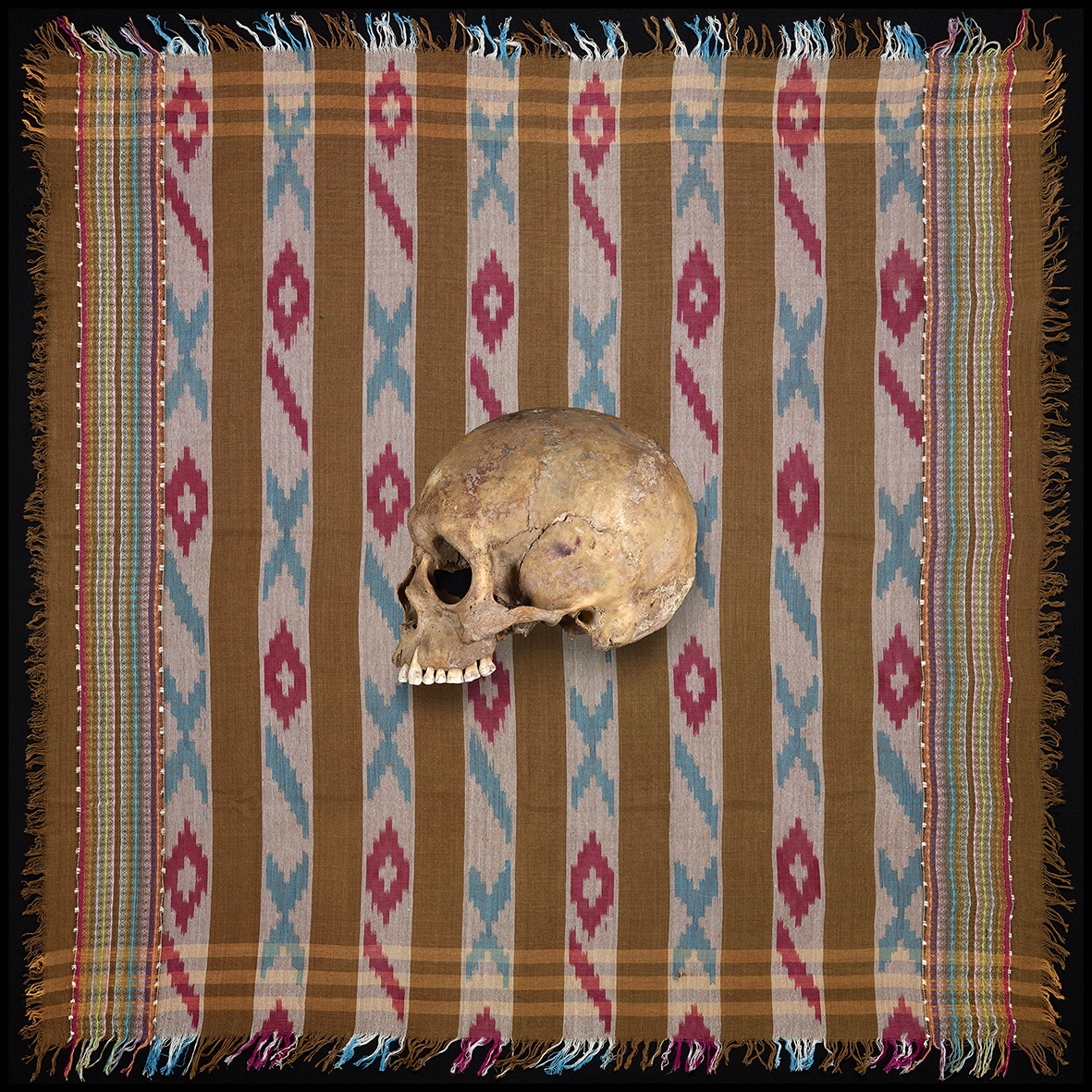
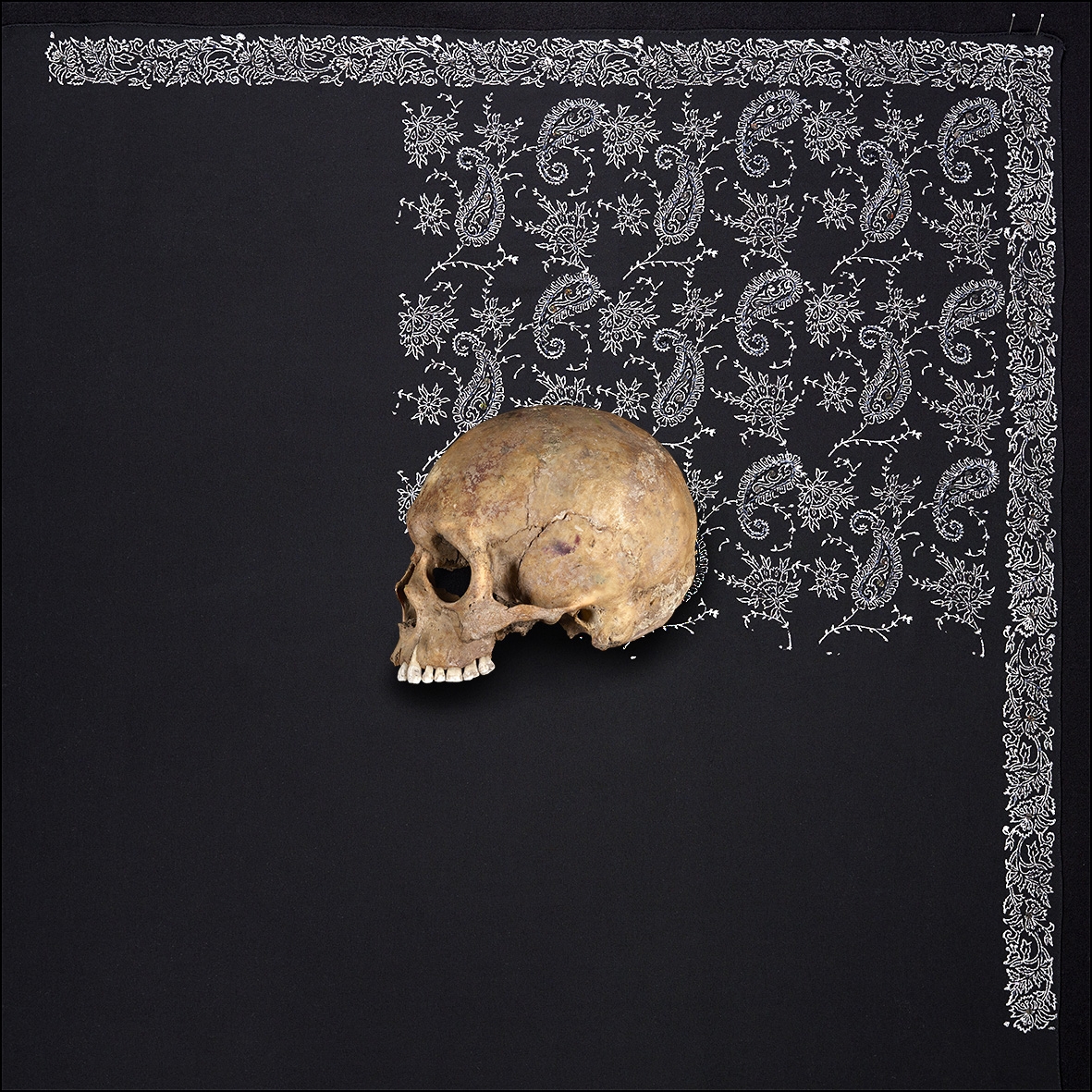
Piotr Piotrowski already tried to answer some of these questions in his essay “The Old Attitude and the New Faith” (1995), particularly the issue of the disguise of patriarchy during socialist times or, as he put it, that the emancipation of women was merely one more “fraud” or “camouflage,” typical of Poland’s socialist past.[26]
On the surface, women seemed to play a significant role in the political, cultural, and national arenas during the heroic years of communism, and women’s lives were ostensibly shaped by the ideology of liberation and equal rights, as the phrase went in Poland. But fraud was a characteristic feature of real socialism, and the appointment of seamstresses to the politburo, the meetings between the League of Women and the first secretary, and the annual celebrations of Women’s Day were incapable of concealing the true situation of women in those years.[27]
According to Piotrowski, after the fall of the Berlin Wall the authorities even gave up on trying to obscure the prevailing, systemic, repressive, and sexist attitudes towards women, and for him there were two factors that contributed to this: the political, to be recognized in “the vehement eruption of right-wing rhetoric” towards family, childcare, and motherhood that was easily accepted as a counterreaction to the communist indoctrination of the “past era,” and the economic, to be recognized in the uneven and unequal competition in the labor market after the transition from a centralized to a free-market economy.[28]
Although Polish society now functions on entirely different sociopolitical and economic parameters than in the past, during socialism, the evident, more recently proposed and still-deliberated stringent control over the female (and male) body and sexuality resonates with the surveillance and control that regimes in the past exercised in parallel with the equality they proclaimed. Particularly relevant is the affected freedom to make important decisions and choices that directly determine women’s lives in a situation where the state and church make advancements towards gaining increasing control over natalist politics, e.g. the rights to abortion and contraception, or the right to work, the right to remain single, etc.
In Zofia Kulik’s works, repetition is used to evoke temporality, due to the spatial and visual way in which the repetition is presented. It is not just an impromptu interpretation if one recognizes exactly the resonance of these images with the return of patriarchy with difference. The question of whether patriarchy was ever unified and homogenous is even more compelling, because if the cracked structure was always there, it becomes clearer that not only was the return (as different) inevitable, but also that patriarchy was never isotopic to itself. One could easily apply this assertion to patriarchy in order to consider whether the patriarchy that returned is the same patriarchy from the past, or is rather a kind of updated version 2.0 of patriarchy that is ever more resilient to any criticism and overwrites resistance to its rules. Although patriarchy was under scrutiny during the socialist period, it never completely disappeared. Yet it was somehow weakened and fragmented between the faithless state, dormant church, and family. Its continuity, however, persisted and has been maintained in various societal cells, so its contemporary repetition and mirroring happens with differences almost invisible to the naked eye.
Archive of Monuments and Movements
Kulik dealt with the historical past, with personal and collective memory, and with the indentations and incisions that societies of control leave behind on the epidermis of (and deeper into) societal tissue. The versatile and vast body of her work has often been referred to as to an archive, both personal and historical. For example, in some larger installations, the museum vitrines that accumulate various socialist “memorabilia” (medals, souvenirs, photographs, postcards, etc.) provide the contextual background for viewers.[29]
As in any archive, though, in Kulik’s collection of appropriated forms, shapes, and images there are a lot of duplicates, with asymmetrical mirroring images that are not completely the same but include subtle differences and motions by proxy, resulting from technology and production, not always in the realm of the visible. The intersections between nation, church, power regime, and other patriarchal authorities, on the one hand, and the body, subjectivity, gender, and sexuality, on the other, are so perplexing that they encompass women’s lives—from giving birth until death. However, the usual (but complex) cycle of life (to which Kulik referred in, for example, From Siberia to Cyberia) and whatever happens between birth and death is heavily disturbed, interrupted, and deconstructed: it is turned in a closed circuit, reciprocally influenced by representation and the visual field, so that the virtual world of images and the real world are both equally confining.
The artist has provided us with a valuable, cross-referential iconographic guide for the interpretation of her complex and multilayered artworks, particularly for understanding All the Missiles Are One Missile (1993), which she exhibited in the frame of the Polish National Pavilion when she represented Poland at the Venice Biennale in 1997.[30] The Guide (1997) pointed out many resourceful influences and possible readings of the work, with plenty of textual and visual references. The unusually precise analysis of forms and contents from diverse geographical and geopolitical resources points to the complex and painstaking research that preceded the execution of Kulik’s work. Historical visual imagery is compared, cross-referenced, and staged (by Zbigniew Libera) side by side with contemporaneous references, thus building an archive “of visual tricks and references” that stands as a work on its own. In the Guide, diverse drawings and photographic reproductions from books, newspapers, and postcards, referring to images of events and objects from different regions and periods (e.g. the Italian Renaissance, the Austro-Hungarian Empire, communist China and Russia, and contemporary Poland) are carefully assembled, so that no additional commentaries are necessary. The Freedom Monument (from a cemetery in Riga), along with images from processions and Communions in Poland, point to the artist’s interest in the uses of imagery of women and children for the representation of the nation and state, as if a beautiful woman or an innocent child could make gruesome reality and war atrocities more bearable.

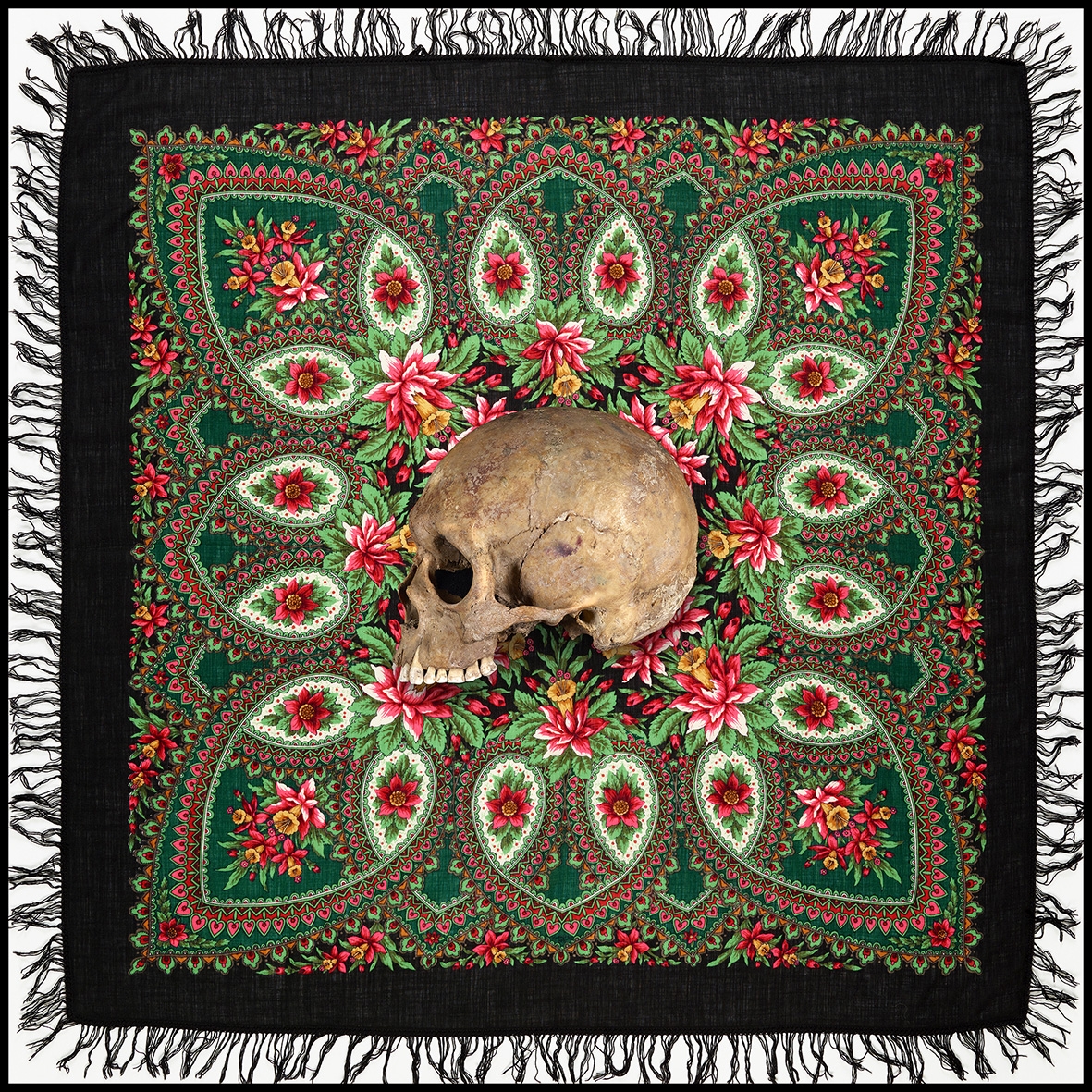
However, some of Kulik’s obvious inspiration for representing movement with static images comes from the more distant past: from the obsessive photo-experiments of British photographer Eadweard Muybridge and French scientist Etienne-Jules Marey, who both dedicated their careers to recording several phases of a movement on one photographic surface.[31] Some direct or indirect links between military technology, repetitive iconography, and representational regimes are relevant to Kulik’s work, although they are not necessarily closely related in thematic terms.[32]
In fairness, many of the systemic relations between hegemonic representational regimes, knowledge-production based on the developments (and limitations) of representational technological means, and the unstable nature of perception have been thoroughly discussed by Jonathan Crary, the renowned American art historian and theorist of photography.[33] However, in Crary’s acclaimed books there is no in-depth analysis of the links between different technological inputs in the creation of the dominant representational regimes of gender stereotypes.
Kulik, on the contrary, applied repetitive iconography in order to evoke and attack the patriarchal macro-narrative of the reiteration and internalization of power, and offered a kind of fragmenting and dismantling of the monumentalizing iconography of the “world order,” turned into images and objects as her imagined “revenge,” in order to fight amnesia and the return of unwanted history. Despite the desire to freeze time, the organized suppression and forgetting of visual memory often prevails, and one of the many compelling elements of her work is the disclosure of the camouflage of the contrast between such patriarchal mechanisms. However, patriarchy is a system that was invented and developed historically rather than naturally, which means that it is neither pre-given nor inevitable, and some women and men have resisted its rule throughout its history. Zofia Kulik is not only one of them, but in her works she also aims towards the unraveling and dismantling of the ongoing and omnipresent patriarchal rules of representation, regardless of the historical, geopolitical, cultural, or religious context.
Excerpted from Zofia Kulik: Methodology, My Loved, edited by Agata Jakubowska. Reprinted with permission from the Kulik-KwieKulik Foundation and the Museum of Modern Art in Warsaw, distributed by the University of Chicago Press. Copyright 2020.
Suzana Milevska, PhD, is a curator and a visual culture theorist based in Skopje. Her theoretical and curatorial interests include postcolonial and feminist critique of representational regimes of hegemonic power in the arts and visual culture, and collaborative and participatory art practices in marginalized communities. She was principal investigator for the Horizon 2020 project Transmitting Contentious Cultural Heritages with the Arts (TRACES), and curated the exhibition Contentious Objects/Ashamed Subjects (Politecnico di Milano, 2019). She was the Endowed Professor of Central and South Eastern European Art Histories (Academy of Fine Arts Vienna, 2013–15) and taught history and theory of visual art (Faculty of Fine Arts, Skopje, 2010–12). She initiated and directed the Center for Visual and Cultural Research Skopje (2006–08). She holds a PhD in Visual Cultures from Goldsmiths, University of London, and was a Fulbright Senior Research Scholar at the Library of Congress in Washington, D.C. She curated The Renaming Machine (Ljubljana, Zagreb, Vienna, 2009–11), Roma Protocol (the Austrian Parliament, Wiener Festwochen), and Call the Witness (BAK, Utrecht, 2011), and was the initiator of Call the Witness (Roma Pavilion, Venice Biennale, 2011). She authored Gender Difference in the Balkans (2010), and edited The Renaming Machine: The Book (2010) and On Productive Shame, Reconciliation, and Agency (2016). She is the recipient of the Igor Zabel Award for Culture and Theory (2012).
[1] Also translated as All Bullets Are One Bullet, in Paweł Leszkowicz, “War (!!!) and Peace (?): Fascination with Militarism in Contemporary Polish Art,” War and Peace, ex. cat. (Lublin: Galeria Labirynt, 2015), wystawy.labirynt. com/wp-content/uploads/2015/10/Paweł-Leszkowicz_en.pdf.
[2] Gilles Deleuze, Difference and Repetition, trans. Paul Patton (London: Continuum, 2004), 374.
[3] Deleuze, Difference and Repetition, 374.
[4] As Lee Spinks explains further, in Deleuze’s view, one should explicitly repudiate the naive reading of Nietzsche that envisages eternal return as a doctrine proclaiming the infinite recurrence of every historical moment in exactly the same order throughout eternity. Spinks, “Eternal Return,” in The Deleuze Dictionary, ed. Adrian Parr (New York: Columbia University Press, 2006), 84.
[5] Leszkowicz, “War (!!!) and Peace (?).”
[6] There are two versions of the work: a slideshow from 1997 and a printed version from 2017 (Museum Susch collection).
[7] “A skull borrowed from Jasio Rasiński. I don’t know where he got it from, photo 1994.” Kulik, quoted in Zofia Kulik—The Splendor of Myself V (Mother, Daughter, Partner), trans. Weronika Bachman and Ron Rocco, ex. cat. (Berlin: ŻAK BRANICKA, 2008).
[8] Suzana Milevska, “53 Wounds in Solidarity: Appropriation and ‘Hostipitality’ in the Slogan ‘We Refugees,’” Eurozine, January 21, 2017, https://www.eurozine.com/53-wounds-in-solidarity-appropriation-andhostipitality-in-the-slogan-we-refugees/.
[9] Deleuze, Difference and Repetition, 374–75.
[10] Deleuze, Nietzsche and Philosophy, trans. Hugh Tomlinson (London: Athlone Press, 1983), 46.
[11] Deleuze, Difference and Repetition, 372–74.
[12] Suzana Milevska and Arun Saldanha, “The Eternal Return of Race: Reflections on East European Racism,” in Deleuze and Race, eds. Arun Saldanha and Jason M. Adams (Edinburgh: Edinburgh University Press, 2013), 225–47: 227.
[13] Deleuze, Nietzsche and Philosophy, 47.
[14] Kulik, “Na temat repetycji,” in Obecność III / Presence III, Poznań, 1992, quoted in Piotr Piotrowski, “The Old Attitude and the New Faith,” in Beyond Belief: Contemporary Art from East Central Europe, ed. Laura J. Hoptman (Chicago: Museum of Contemporary Art, 1995), 43.
[15] The frail and vulnerable body, often doubled, split in half, or wrapped in bandages like a mummy, of the male model (Polish artist Zbigniew Libera, Kulik’s model while her student in the 1990s), was turned into a symmetrical compositional grid. His figure becomes a reverse reflection of the patriarchal “world order,” a kind of metaphoric framework for understanding the subordinating representational regimes, and the stereotypical divisions and distribution of power between masculinity and femininity.
[16] Ewa Lajer-Burcharth, “Old Histories: Zofia Kulik’s Ironic Recollections,” in New Histories, ex. cat. (Boston: Institute of Contemporary Art, 1996), 119–36: 124. Reprinted in this volume. Psychological and psychoanalytical references have frequently been used in the interpretation of Zofia Kulik’s work, e.g. by Izabela Kowalczyk in her early essay “The Geometry of Power in Zofia Kulik’s Work,” n.paradoxa, online issue no.11 (October 1999), 19–25, https://www.ktpress.co.uk/pdf/nparadoxaissue11.pdf.
[17] A similar anticipatory critique can be recognized in several early performances, documented as video works or photographs, which Kulik realized in the 1980s and early 1990s (as part of KwieKulik, with Przemysław Kwiek, her partner at the time), e.g. the complex political links between the national and international regimes of the control of movement (The Monument without a Passport, 1978), or the Debordian links between consumerism, media, and advertisement (e.g. the video Supermarket, Stuttgart, 1981).
[18] Barbara Bodalska, “Polish President signs anti-defamation bill, causing international protests,” EURACTIV Poland, February 7, 2018, https://www.euractiv.com/section/central-europe/news/polish-presidentsigns-anti-defamation-bill-causing-international-protests/.
[19] “Polish Senate approves changes to the Law on the Institute of National Remembrance,” UAWire, June 28, 2018, https://uawire.org/the-polishsenate- approved-the-changes-to-the-law-on-the-institute-of-nationalremembrance.
[20] For an in-depth comparative analysis of the Marxist critique of bodily exploitation in capitalist societies and the Foucauldian critique of the biopolitical regime of control and surveillance developed under liberal capitalism, see Wendy Brown, States of Injury: Power and Freedom in Late Modernity (Princeton: Princeton University Press, 1995), 10.
[21] Milevska and Saldanha, “The Eternal Return,” 229.
[22] Kulik, An Iconographic Guide to All the Missiles Are One Missile (Warsaw: Zachęta National Gallery of Art, 1997).
[23] For a general comparison between the concerns of feminist artists from the East and West, see Ewa Grigar, “The Gendered Body as Raw Material for Women Artists in Central Eastern Europe after Communism,” in Living Gender after Communism, eds. Janet Elise Johnson and Jean C. Robinson (Bloomington: Indiana University Press, 2006), 80–104.
[24] Sarah G. Wilson, “Discovering the Psyche: Zofia Kulik,” n.paradoxa 4 (July 1999): 55–64; Piotr Piotrowski, “Between Siberia and Cyberia: On the Art. of Zofia Kulik and on Museums,” in Zofia Kulik: Od Syberii do Cyberii / From Siberia to Cyberia, eds. Kulik and Piotrowski (Poznań: National Museum, 1999), 7–33; Sarah G. Wilson, “Zofia Kulik: From Warsaw to Cyberia,” Centropa 1, no. 3 (September 2001): 233–44 (reprinted in this volume); Gregory Volk, “Sculpting with Images: On the Early Photomontages of Zofia Kulik,” in Zofia Kulik, ex. cat. (Berlin: ŻAK BRANICKA, 2016).
[25] Sławomir Sierakowski, “The Polish Church’s Gender Problem,” New York Times online, January 26, 2014, https://www.nytimes.com/2014/01/27/opinion/sierakowski-the-polish-churchs-gender-problem.html;Katheryn Detwiler and Ann Snitow, “Gender Trouble in Poland,” Dissent, Fall 2016, https://www.dissentmagazine.org/article/gender-troublepoland-pis-abortion-ban.
[26] Piotrowski, “The Old Attitude,” 41.
[27] Piotrowski, “The Old Attitude,” 41.
[28] Piotrowski offered gruesome statistics regarding the structure of employment in Poland in 1995: “80 percent of women are employed in jobs which require absolutely no skills, and their pay is 30 percent lower than that of men [in the same jobs] […] There are only 30 women among the 360 managers of light industrial plants (where 70 percent of the workers are women).” Piotrowski, “The Old Attitude,” 42.
[29] Vitrines were used by Kulik on various occasions; as an autonomous work they were presented at her solo exhibition Symbolic Weapon in 1993 (BWA Gallery, Sopot; Zachęta National Gallery of Art, Warsaw) as Private, Common, Soft, Metal, Faded Propaganda, Retrospective—Things.
[30] Kulik, An Iconographic Guide.
[31] Eadweard Muybridge (1830–1904) is important for his pioneering work in the photographic studies of human and animal locomotion (by using multiple cameras), and his early work in motion-picture projection (e.g. the zoopraxiscope, the predecessor of the film strip used in cinematography). Simultaneously, in the 1880s, the French scientist and chronophotographer Etienne-Jules Marey (also 1830–1904) invented a photographic gun that used a rotating glass plate to take twelve consecutive pictures per second in order to learn how birds fly.
[32] For example, Marey’s gun was constructed with knowledge of the mechanism of the Henry repeating rifle (a lever-action, breechloading, tubular magazine rifle), designed by Benjamin Tyler Henry just a couple of decades earlier, in the early 1860s.
[33] Jonathan Crary, Techniques of the Observer: On Vision and Modernity in the Nineteenth Century (Cambridge, MA: MIT Press, 1999); Crary, Suspensions of Perception: Attention, Spectacle, and Modern Culture (Cambridge, MA: MIT Press, 2001).
Imprint
| Author | Agata Jakubowska (editor) |
| Title | Zofia Kulik: Methodology, My Loved |
| Publisher | Museum of Modern Art in Warsaw |
| Published | 2019 Warsaw |
| Index | Museum of Modern Art in Warsaw Suzana Milevska Zofia Kulik |
